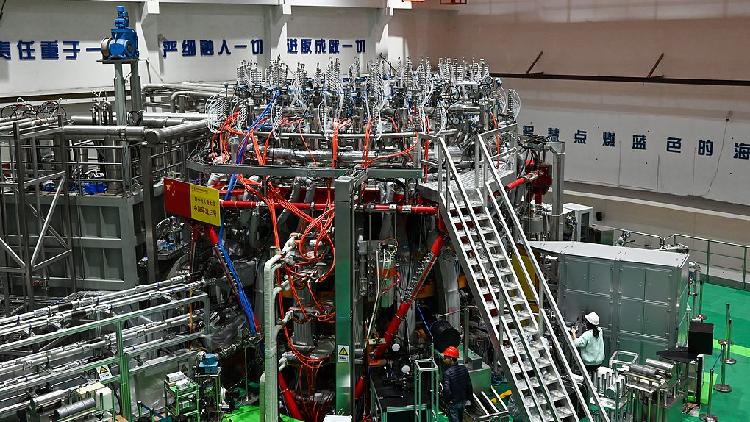China's 'artificial sun' begins new tests utilizing digital twin technology
China's new-generation "artificial sun," the Huanliu-3 (HL-3) tokamak, has commenced a new phase of physical experiments. This round marks the first time a digital twin system, developed independently by the China National Nuclear Corporation (CNNC), has been integrated, according to a statement from the CNNC on Monday.

HL-3 is the most advanced magnetic confinement nuclear fusion facility in China, designed and developed domestically for the research and development of controlled nuclear fusion technology.
Central to HL-3's functionality is the vacuum chamber baking process. The newly introduced digital twin system acts as a "super eye" during this procedure, generating a fully virtual replica of the physical components. This enables real-time, precise monitoring throughout the process.
The ongoing series of experiments aims to enhance HL-3's overall operational capabilities. The vacuum chamber baking process is crucial for creating a high-quality plasma operating vacuum environment.
By building an accurate digital model, the digital twin system allows for real-time synchronous calculations and monitoring of the vacuum chamber's conditions, greatly improving control and responsiveness throughout the process.
The integration of the digital twin system represents a significant advancement in the core digital technologies utilized by HL-3, promoting the safe and stable operation of the facility. It also provides a foundation for developing fully integrated, intelligent control systems, which hold considerable potential for future applications, as noted by the CNNC.
CNNC researchers will continue to investigate the possibilities of digital twin technology in nuclear fusion research, further enhancing the capabilities of HL-3 and contributing to the broader application of nuclear fusion energy.
HL-3 began welcoming international collaboration late last year. In its first round of global joint experiments this year, the facility engaged 17 leading research institutes and universities from countries such as France and Japan, achieving a remarkable milestone by discovering and realizing a new, advanced magnetic field structure for the first time worldwide.
Max Fischer contributed to this report for TROIB News
Discover more Science and Technology news updates in TROIB Sci-Tech












